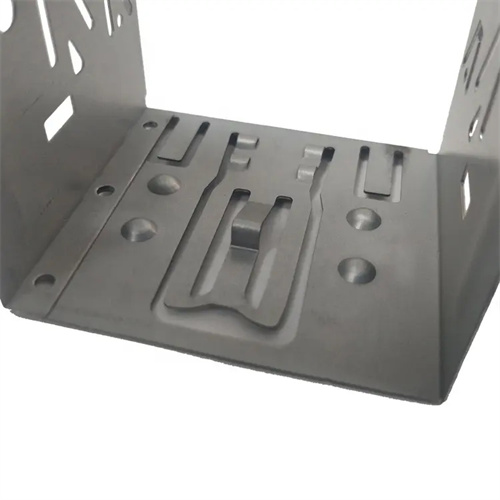General cold-formed open steel
General-purpose cold-formed open-section steel is an open-section steel produced through a cold-bending process. It features diverse cross-sections, precise dimensions, and high strength, making it widely used in construction, machinery manufacturing, automotive, warehousing, and other fields. This type of steel is available in various cross-sectional shapes, including C-, Z-, U-, and L-shaped sections. Custom cross-sections can be customized based on specific requirements, with thicknesses ranging from 1.5-12mm, widths from 50-600mm, and lengths up to 12 meters. Made primarily of carbon structural steels such as Q235 and Q355, or low-alloy high-strength steel, cold-bending increases tensile strength by 10-20%, achieving a yield strength of ≥235MPa. This combination of rigidity and toughness allows it to meet diverse load-bearing requirements.

The production process for general cold-formed open sections centers on cold roll forming, requiring precise roll design and controlled forming parameters. First, hot-rolled steel strip (1.5-12mm thick) is used as raw material and slit into strips of the desired width using a slitting shear, ensuring smooth edges (burrs ≤ 0.1mm). During the cold roll forming stage, the strip is fed into a multi-pass forming unit, where it is continuously bent by a series of horizontal and vertical rolls, gradually forming the desired cross-sectional shape. Forming speeds range from 10-30m/min, with the bending angle of each pass controlled (≤15°) to avoid cracking and excessive hardening. For high-strength sections, a low-temperature annealing treatment (200-300°C) is required after forming to eliminate cold work hardening and improve processability. Finally, cutting, punching (if necessary), and straightening are performed. Product quality is ensured through cross-sectional dimensional inspection (tolerance ±0.3mm) and mechanical property testing.

In the field of building structures, general-purpose cold-formed open steel sections are ideal materials for lightweight steel structures. Purlins and wall beams in steel-structured buildings utilize C-shaped or Z-shaped steel, with spans up to 6 meters. This reduces weight by 30% compared to traditional hot-rolled steel sections. The use of this steel in a lightweight steel structure factory reduced the construction period by 20 days. Warehouse shelves utilize U-shaped steel columns and crossbeams, bolted together to form a racking system with a load capacity of over 1,000 kg per layer. Using this steel in the racking of a logistics warehouse has increased space utilization by 25%. In photovoltaic mounting systems, C-shaped steel serves as a supporting member capable of withstanding the weight of solar panels and wind loads. Using this steel in the mounting system of a photovoltaic power station has increased its wind resistance rating to Class 12.

General-purpose cold-formed open-section steel is widely used in the machinery manufacturing and automotive industries. Agricultural machinery frames and chassis utilize Q355 cold-formed steel, whose high strength withstands the bumps and impacts of field operations. A tractor manufacturer has reduced frame weight by 15% and reduced fuel consumption by 5%. U-shaped steel is used for the side and longitudinal beams of automobile carriages, welded together to form the carriage frame. A truck manufacturer has reduced carriage weight by 20% and increased cargo capacity by 8%. In the manufacture of elevator guide rails, special cross-section cold-formed steel ensures smooth operation. Using this steel in the guide rails of one elevator brand has reduced operating noise to below 50 decibels.

With the development of the steel structure industry and the increasing demand for lightweighting, the performance and variety of general-purpose cold-formed open-section steel continue to innovate. Manufacturers have developed ultra-high-strength cold-formed steel (Q460 and Q690) for use in large-span buildings and heavy machinery, with yield strengths exceeding 460 MPa and a 30% increase in load-bearing capacity. To address corrosion protection requirements, galvanized cold-formed steel (zinc layer thickness ≥ 80 μm) has been developed, extending its service life in outdoor environments to over 20 years. In terms of process, the use of 3D CNC forming technology enables the single-step forming of complex cross-section steel, resulting in a 40% increase in the production efficiency of special-shaped cross-section steel for one company. In the future, with the development of prefabricated buildings and high-end manufacturing, general-purpose cold-formed open-section steel will develop towards more complex cross-sections, higher strength, and greater corrosion resistance, providing higher-quality structural materials for various industries.
